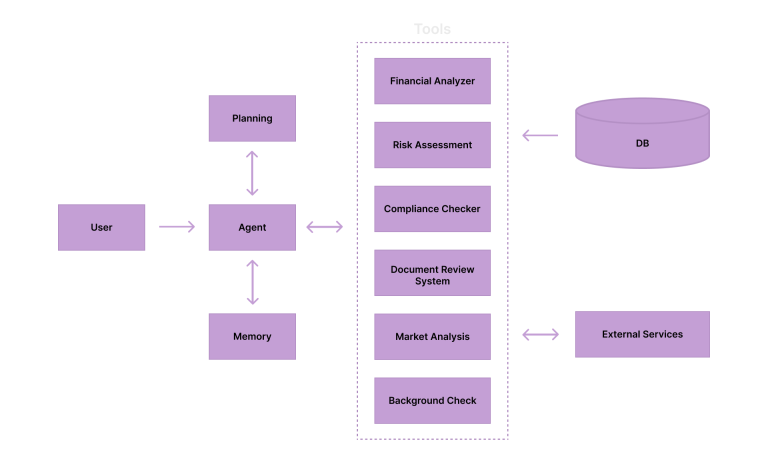
6 inspiring IT staff augmentation success stories: How companies scale fast with nearshore talent
Ever wished you had a tireless coworker who could handle the boring stuff, make smart decisions, and free you up for the big ideas? Welcome to the world of AI agents! In this article, we’ll dive into the practical steps for designing AI agents and explore how they can transform workflows by performing real tasks.

You’ve probably heard about large language models (LLMs) - those clever tools that can chat, write, or whip up code. They’re amazing, but they’re like a brilliant friend who only speaks when spoken to. An AI agent? That’s your friend taking charge - grabbing data from here and there, piecing it together, and deciding what to do next, all on its own. By dynamically combining data from multiple sources, analyzing it, and making informed decisions, an AI agent becomes a powerful tool for real-world applications.
Picture this: A bank is onboarding a new customer. The paperwork piles up, the rules feel endless, and you’re juggling a dozen tasks. An AI agent steps in and makes life a little bit easier for you by:

At the heart of an AI agent is its ability to plan tasks and retain memory, passing information between services to build knowledge - much like a human would.
Giving an LLM the ability to execute workflows isn’t an all-or-nothing process. According to Hugging Face, AI agency operates on five levels:
Unlike traditional software, where we expect flawless precision, AI agents don’t always deliver 100% accuracy. They’re more like humans - capable of mistakes. The key is to design workflows that minimize confusion and ambiguity, reducing the chance of errors.
An important pillar in all AI work is to avoid creating a situation with so much complexity and ambiguity that the LLM becomes confused and is more likely to produce poor results.
Break tasks into manageable, verifiable segments. Unlike human labor, redoing work with AI is fast and cost-effective. When deploying AI agents, implement safeguards similar to those used for human employees to ensure reliability and accountability.
Before building an AI agent, ask yourself: Can this task be handled by a fixed, predetermined workflow? If the answer is yes, a static solution will likely outperform an AI agent in efficiency and accuracy. However, if the task requires adaptability and decision-making - like handling dynamic data or unpredictable scenarios - an AI agent is the ideal choice.
There are many ways to get started building AI agents and it’s easier than you’d think:
Building AI agents opens the door to smarter, more flexible automation. By understanding their strengths and limitations, you can deploy them to tackle real jobs, saving time, reducing errors, and boosting productivity. At 99x, we’re ready to share the secrets that make it happen. Reach out today and let’s dive into how AI can transform your world - trust us, you’ll want to see what’s possible.

6 inspiring IT staff augmentation success stories: How companies scale fast with nearshore talent

Step-by-step approach to QA and Testing: Building bullet-proof software solutions

5 things you must consider when choosing a development framework